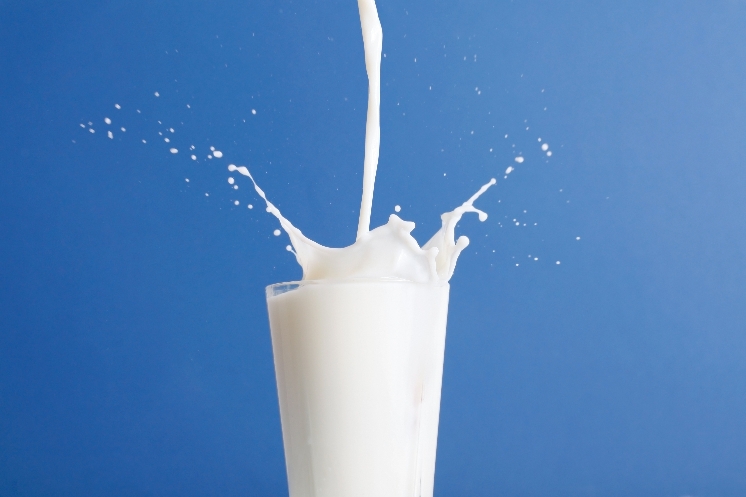|
|
|
Calcium
14.12.05 17:23
|
|---|
|
Calcium - Alkali earth metal
that belongs to Group 2, Periodic table of the
elements, and divalent whose molecular weight is 40
Calcium (Ca)
Calcium accounts for the biggest portion of minerals in the human body, and for an adult, it makes up for about 1.5~2.0% of the weight. 99% of calcium exists in bones and teeth, while the remaining 1% exists in blood, cell water and muscle. In 1808, a UK chemist Davy separated calcium from lime, and the name was derived from a Latin word calling lime ‘calx’. Food with calcium content Calcium is much contained in milk, dairy product, edible bone fish and deep blue.
Effect of calcium 1. Osteogenesis and maintenance of bones Calcium is composed of endoskeleton and tooth where about 99% of internal calcium content exists and is also involved in the function of muscle nerves. In addition, calcium also regulates the effects of endoskeleton, contraction of heart muscle, and relaxation, as essential nutrient for many effect related to blood coagulation. Bones are composed of osteoblast and osteoclast cells. The secretion of collagen from osteoblast forms the bone-supporting structures, causing the calcification after osteoblast gets mature to become osteocyte. Therefore, more intake of calcium maintains the blood calcium level, to be used to form bones. Unlike this, osteoclast prevents blood with calcium discharged by bones through osteoclast which was stimulated and activated by parathormone. Lowered blood calcium level will promote the activation of osteoclast. Such bone turnover of osteoblast and osteoclast lead to the osteogenesis and breakdown. 2. Muscular contraction and relaxation Muscles contain the two types of muscle protein called actin and myosin. After muscle excitability due to neural stimulation, calcium saved in endoplasmic reticulum in cells, while two types of protein are combined together, with the contraction of muscle. When such discharged calcium ion returns to storeroom in cells, the actin and myosin are separated, while contracted muscles are relaxed. 3. Neural transmission Once the action potential reached the nerve cells, the inflow of calcium ion from extracellular fluid into nerve cell. When the concentration of calcium ion in cells rises, neuro-transmitter is discharged and neural stimulation is delivered. Calcium is involved in the transfer of other ions from/to the inside and outside of nerve cells. 4. Effect of blood coagulation Blood coagulation refers to harden blood outside the blood vessel, which is indispensible for life conservation. The thread-protein called fibrin the blood is entangled like net within which blood cells are stored, thereby performing blood coagulation. Calcium is essential to the reaction of fibrin formation. For example, calcium affects the transfer of prothrombin into thrombin. Such generated thrombin coagulates blood, transferring fibrinogen into insoluble fibrin. Without calcium, there’re, blood may not be coagulated, and the deficiency of calcium will finally lead to excessive blooding due to no coagulation of blood caused by minor blooding.
Calcium-deficiency disease 1. Growth delay The lack of calcium for long time results in the growth delay, especially in infants and children due to insufficient calcification of endoskeleton. 2. Reduction in bone mass and osteoporosis The insufficient intake and the lack of calcium due to malabsorption are thought as one of the main reasons of the reduction in bone mass and osteoporosis. 3. Occurrence of a variety of bone diseases The insufficient intake of calcium raises the risk of Tetany (muscular contraction and spasm), rickets, osteomalacia and endoskeleton diseases.
Study on Calcium
1. Role of pre and post-operative oral calcium and vitamin D supplements in prevention of hypocalcemia after total thyroidectomy. (Docimo G1, Tolone S, Pasquali D, Conzo G. G Chir. 2012 Nov-Dec;33(11-12):374-8.) : The intake of calcium and vitamin D supplementations reduced the case of hypocalcaemia caused before and after thyroidectomy
2. Influence of ablactation rats' high calcium intake to the expression of uncoupling protein 2 mRNA after adulthood obesity induction. (Xu S, Zhang K, Zheng S, Wang Z, Yu L, Ding H. Wei Sheng Yan Jiu. 2014 Jan;43(1):83-6.) : The intake of calcium constantly improves the adulthood obesity and blood-lipometabolism disorders. 3. Protective effects of calcium gluconate on osteoarthritis induced by anterior cruciate ligament transection and partial medial meniscectomy in Sprague-Dawley rats. (Kang SJ, Kim JW, Kim KY, Ku SK1, Lee YJ. J Orthop Surg Res. 2014 Mar 7;9(1):14. doi: 10.1186/1749-799X-9-14.) : The results indicated the protective effects of calcium gluconate on osteoarthritis.
|

